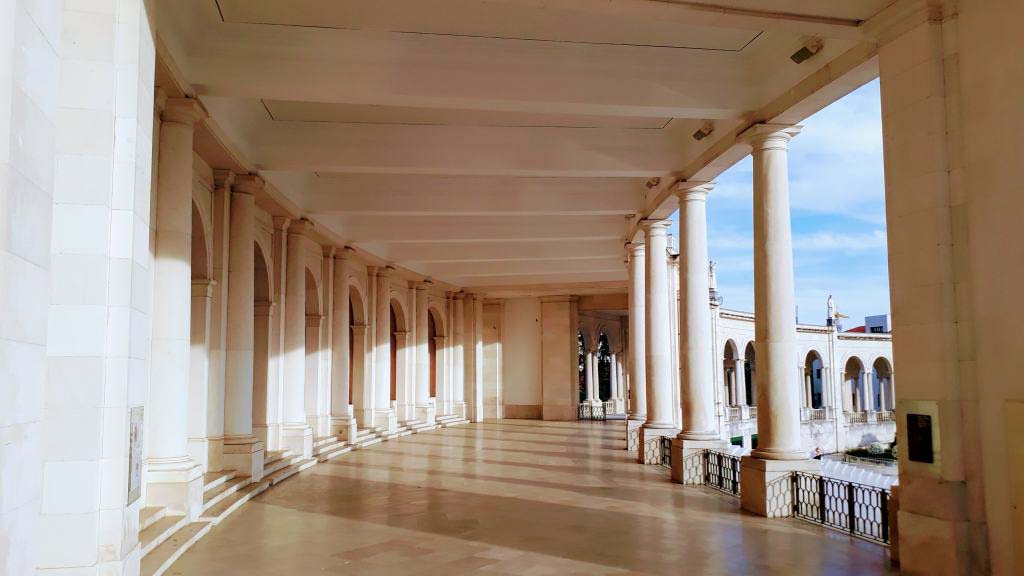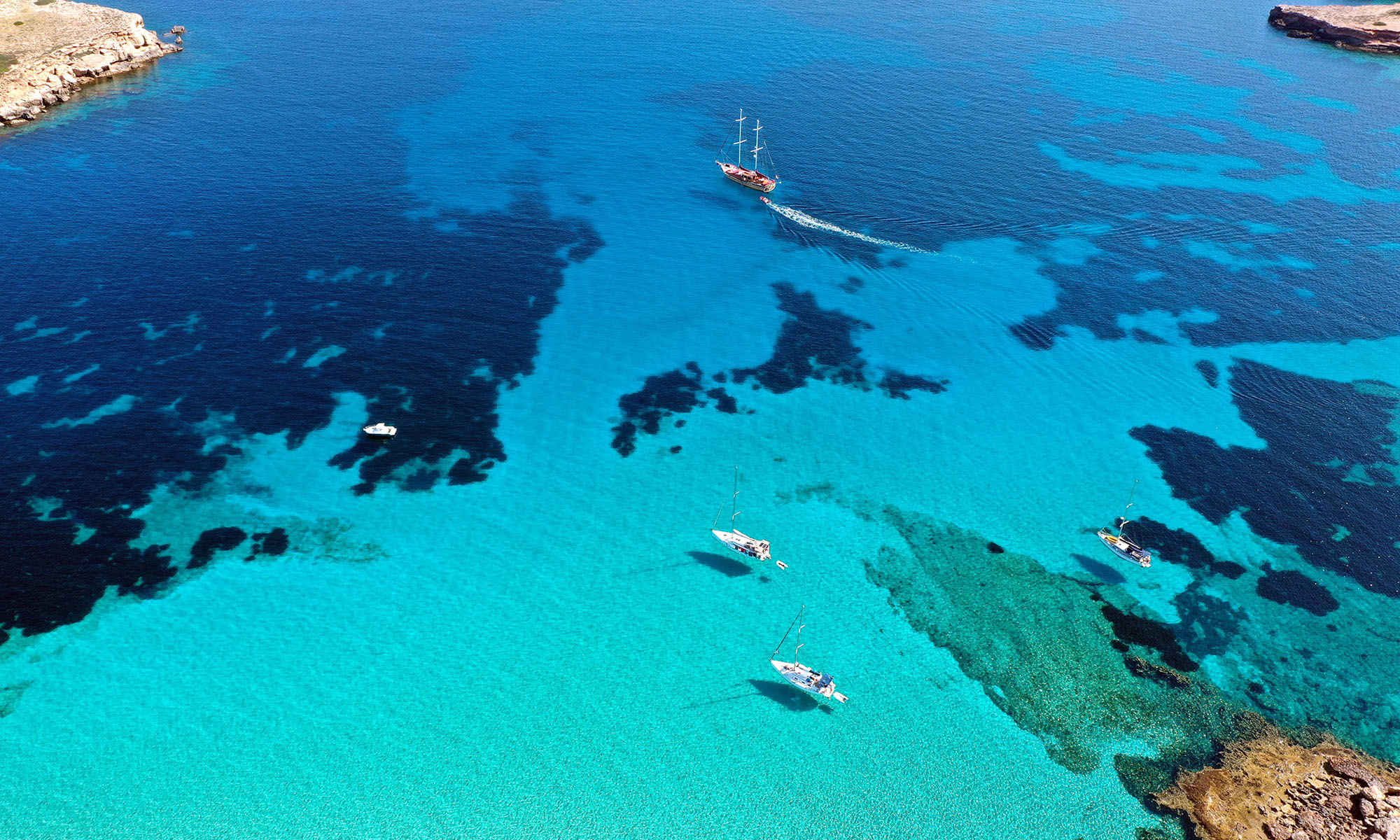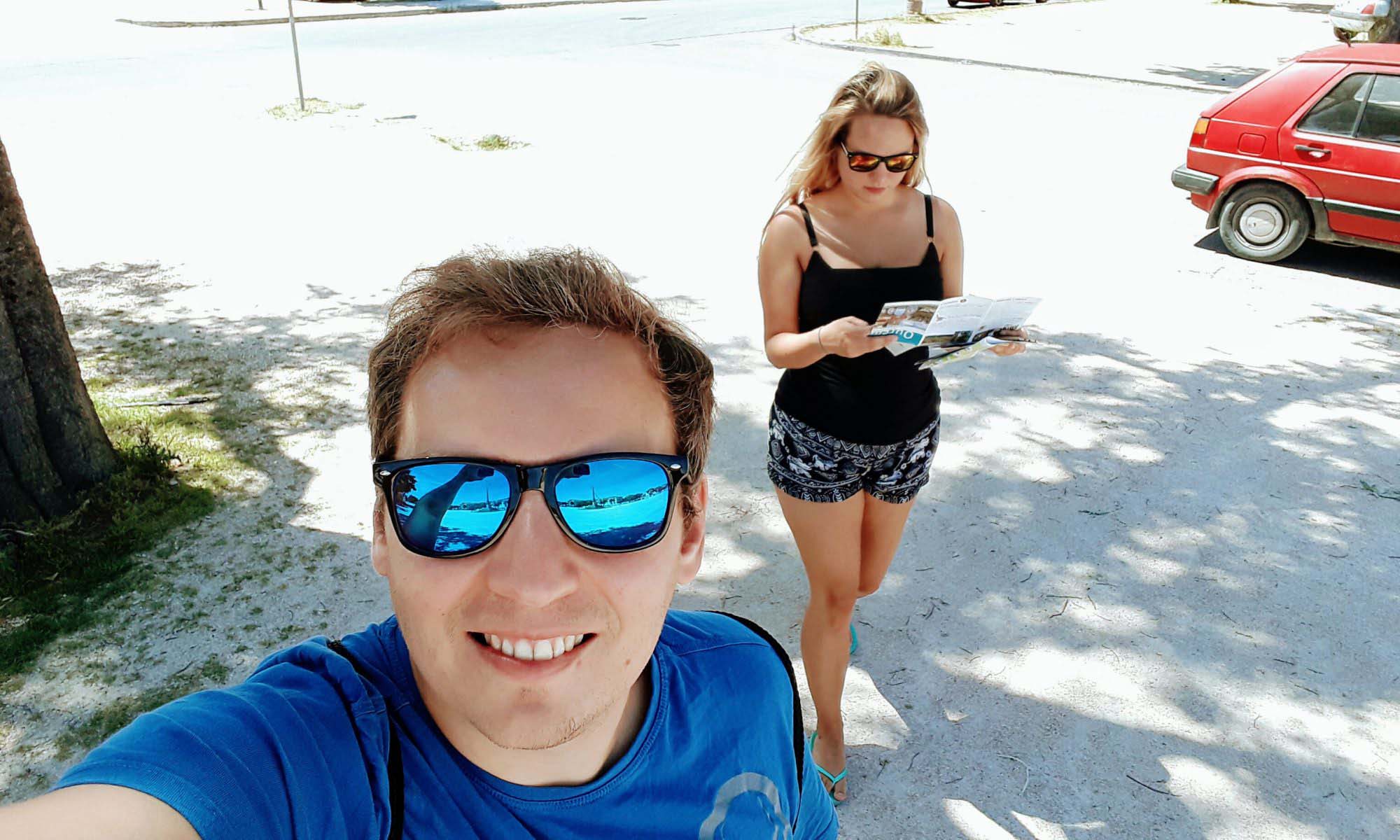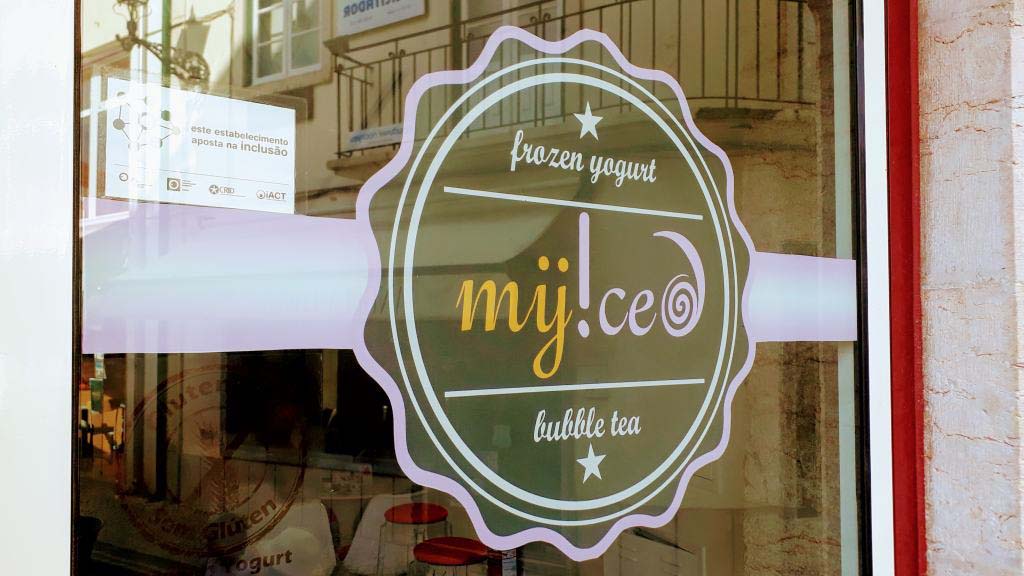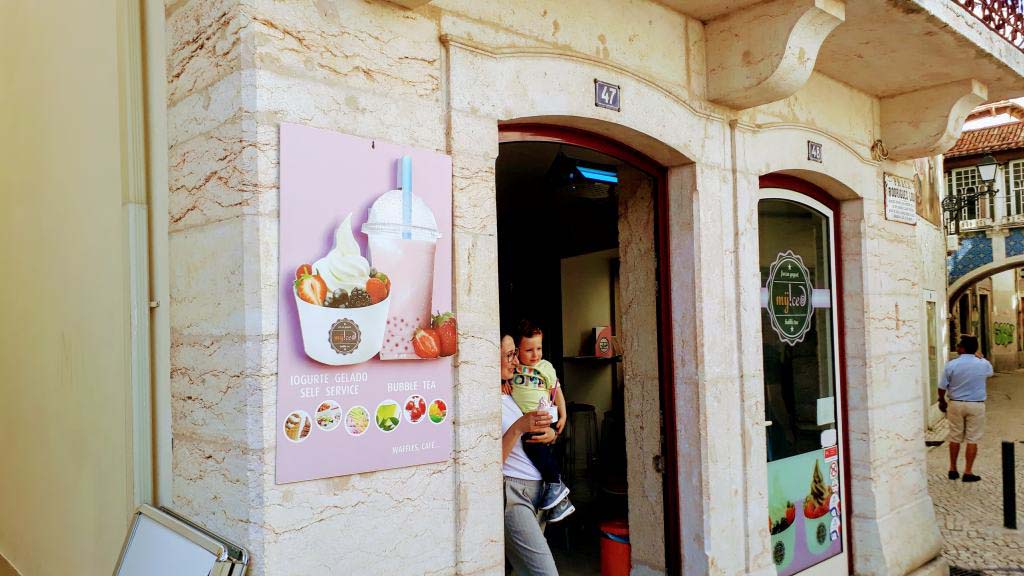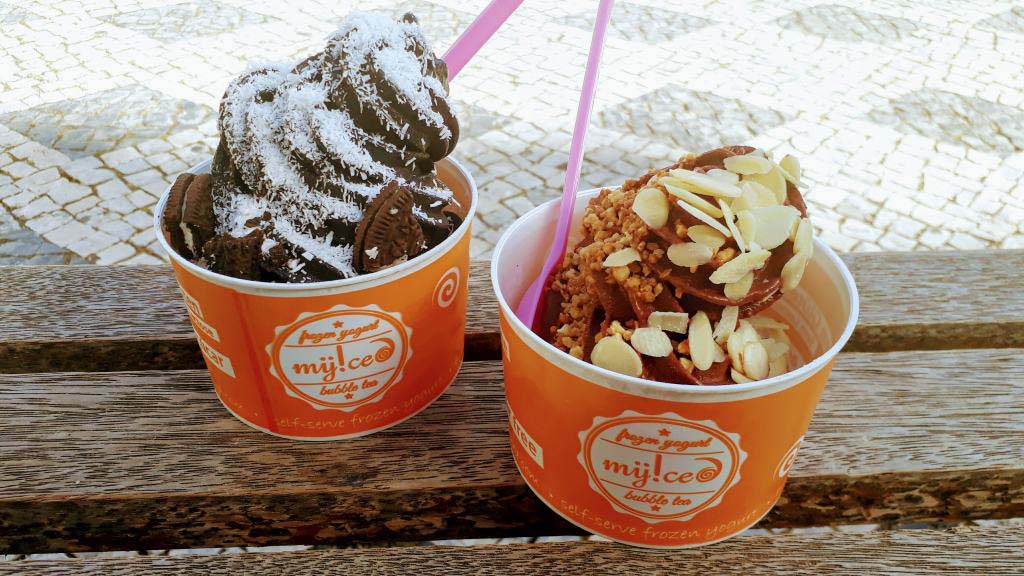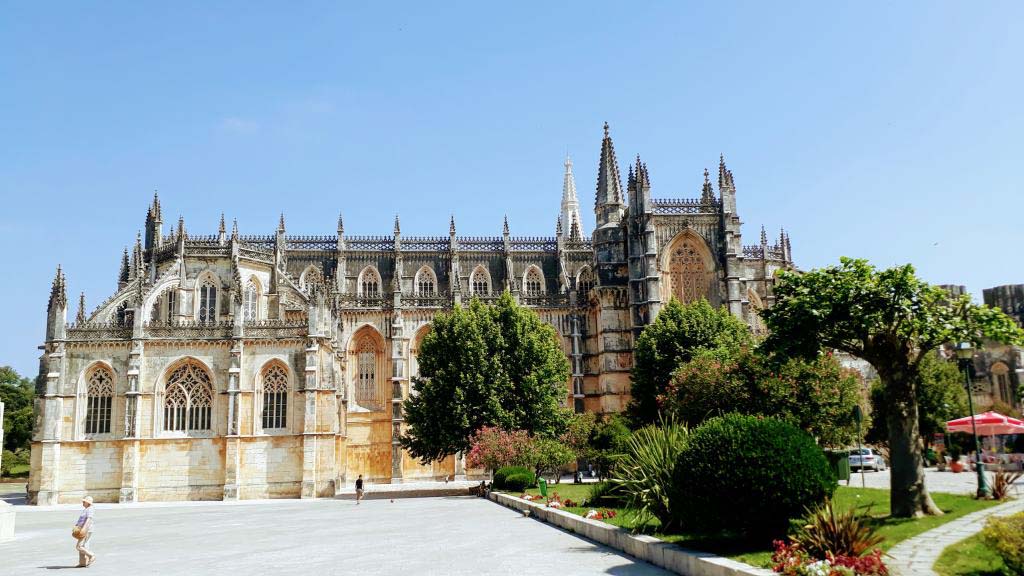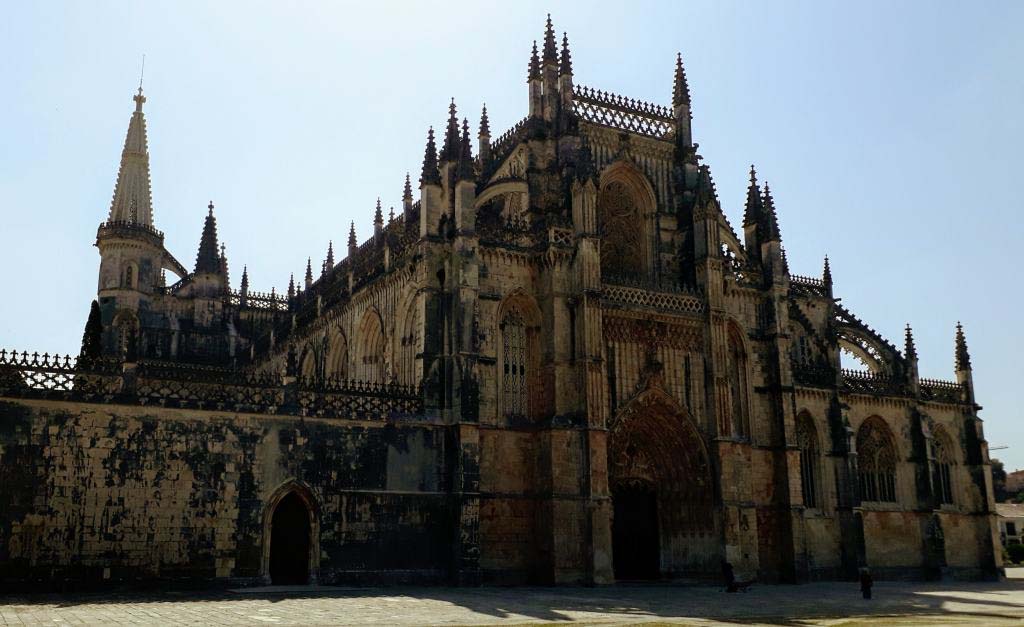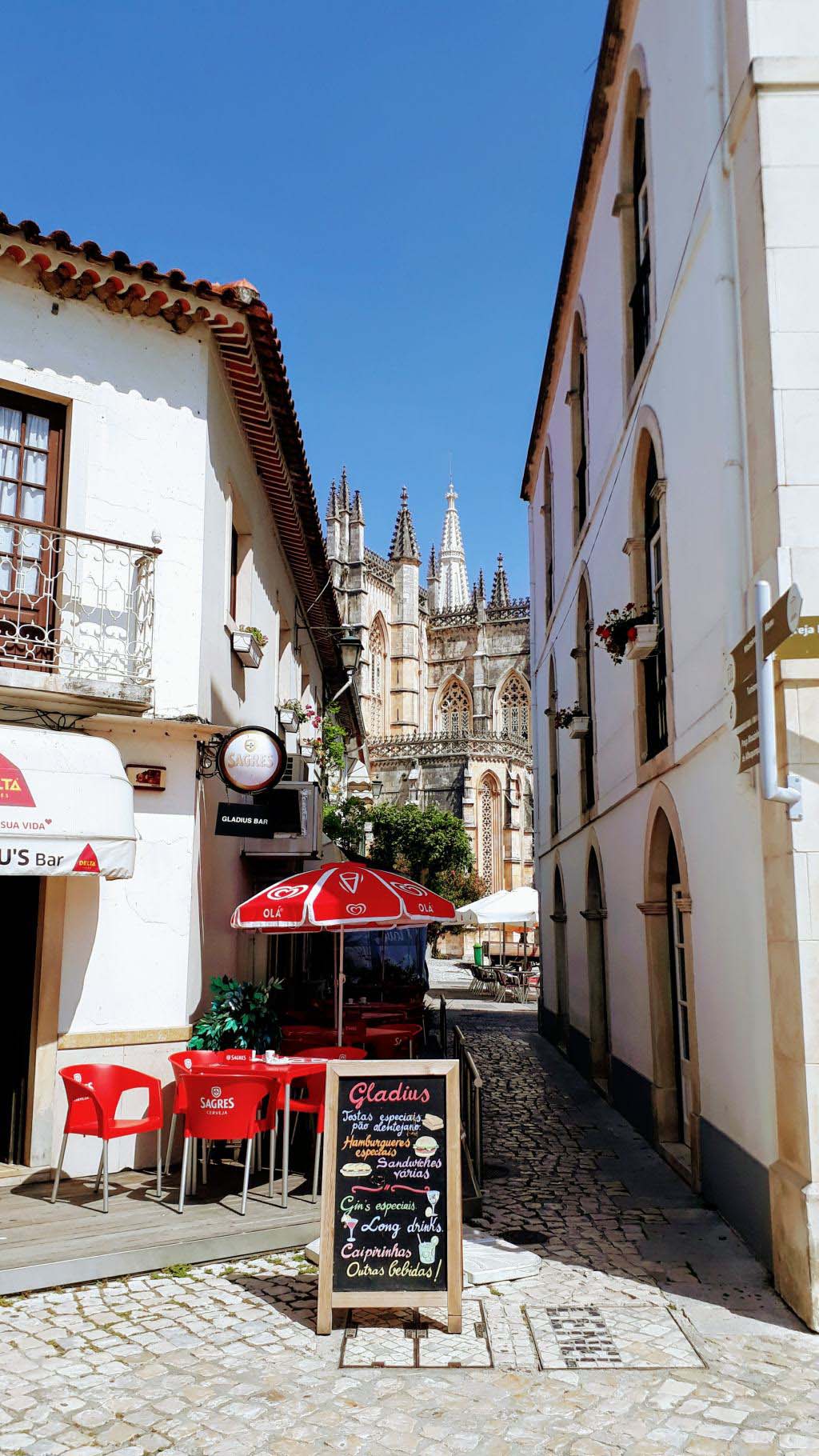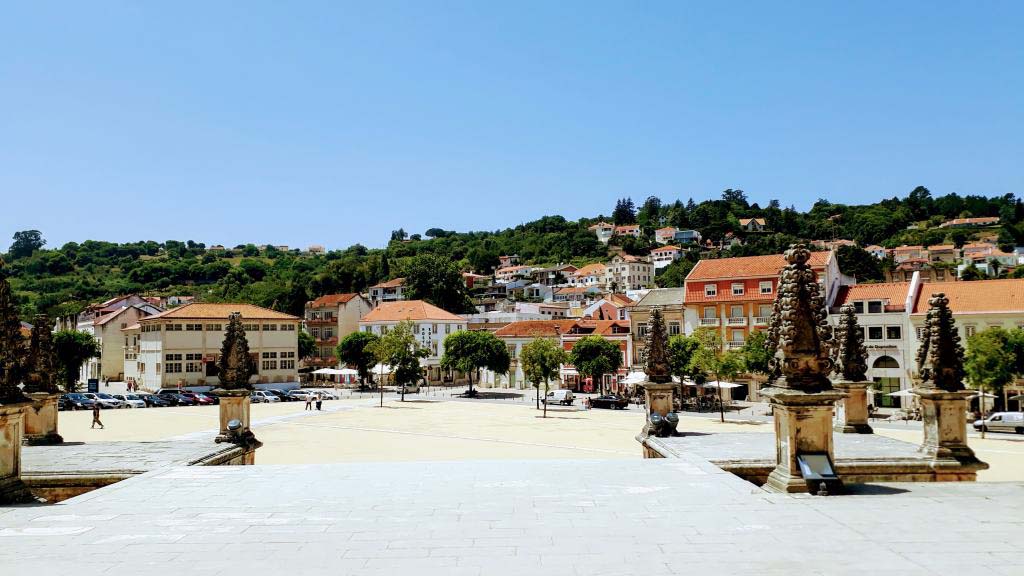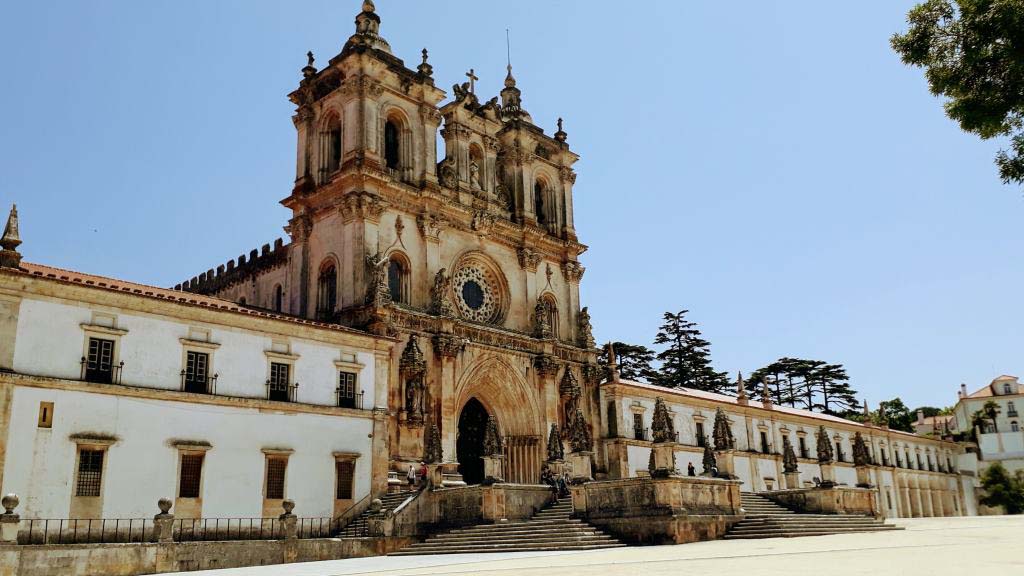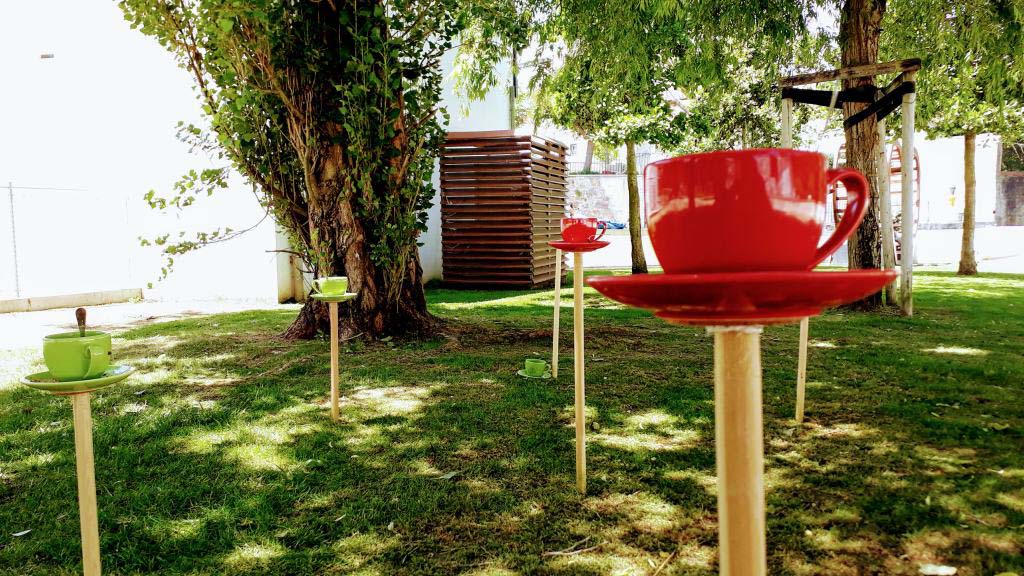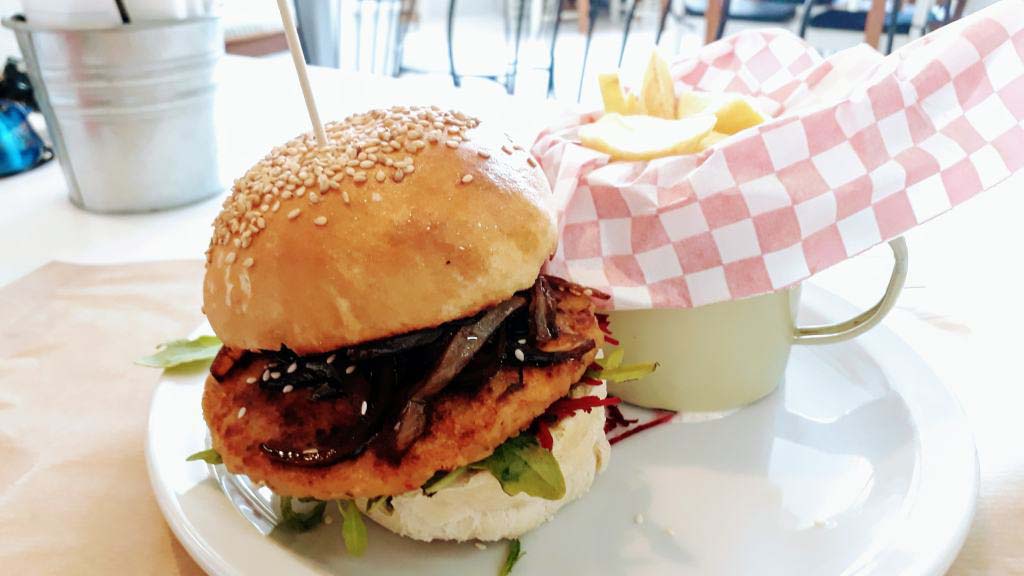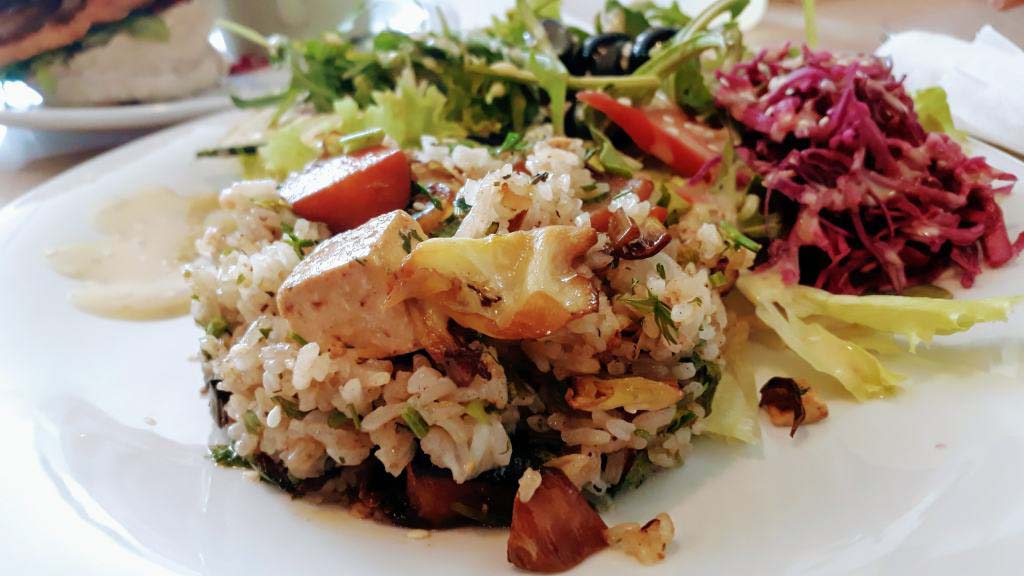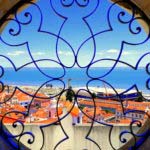Leiria

After we had enough of the mumbo jumbo in Fátima (nobody appeared to us anyway, neither the Virgin Mary nor a miracle) we drove on to Leiria, which is after Coimbra and Aveiro the largest municipality of the Região Centro.
In the middle of the old town, you can find vegan frozen yogurt at mÿ!ced. The varieties black vanilla and chocolate are lactose-, sugar- and gluten-free and clearly labeled as vegan. Also among the toppings there are some vegan options, but here you have to ask. For frozen yogurt junkies like us an absolute must!
Address: Praça Rodrigues Lobo 47, Leira
Batalha

After two nights in Leiria we went on to the second UNESCO monastery in the small town of Batalha. The Mosteiro de Santa Maria da Vitória (Convent of St. Mary of Victory), built from the 14th to the 16th century, was established in gratitude for the victory of Portugal over the Kingdom of Castile in the Battle of Aljubarrota (1385). Therefore, it is also called Mosteiro da Batalha (monastery of the battle) and gave the town its name. In 1983 it was included as a World Cultural Heritage in the list of UNESCO.
We felt this monastery as the most glaring of the three distinguished by the UNESCO. Especially because apart from that, there is not much to see in Batalha itself and the monastery fills almost the same area like the rest of the town and, seen from the highway, appears as out of nowhere. Besides a church, a museum and a bridge from the 19th century, the caves Grutas da Moeda are also located in the district.
Alcobaça

About 20 kilometers southwest of Batalha is the city of Alcobaça, which houses the Mosteiro de Santa Maria de Alcobaça. The former Cistercian monastery is one of the largest monastic sites in Portugal, with the largest church in the country still today. Since 1989, it has also been a UNESCO World Cultural Heritage. Near the monastery are the castle ruins of Castelo de Alcobaça.
Since the beginning of the new century, Alcobaça has been known as Terra da Paixão (land of passion). This was probably due to the love story between King Pedro I and Inês de Castro, who both rest in opposing sarcophagi in the abbey church of the monastery, waiting for their resurrection on doomsday to see each other eyes first. Hence, the Jardim do Amor (Garden of Love), “a new space of leisure” which is to evoke the immortal love of Pedro and Inês.
Neither in Alcobaça you have to go hungry as a vegan: the burger restaurant Meu Farnel offers a vegan burger as well as other vegan options like soups, vegetable, couscous and rice dishes. The restaurant is slightly hidden below the Santander bank. Also here meals can be taken home.
Address: Rua Dr. Brilhante 26, Alcobaça
On a route
The three UNESCO monasteries can be perfectly interconnected on a route and are all worth seeing. If you only have time for visiting one of them, we would recommend the Dominican monastery in Batalha. From the Gothic work symbolically representing the history of Portugal, a new artistic style emerged, the Manueline, which spread over the country.
But also the sanctuary of Fátima could impress even us antitheists. The dimensions are tremendous and the architecture amazing, albeit somewhat frightening. This feeling is strengthened by the many believers who “crawl” on their knees to the Basílica de Nossa Senhora do Rosário in the hope of obtaining forgiveness and healing.
